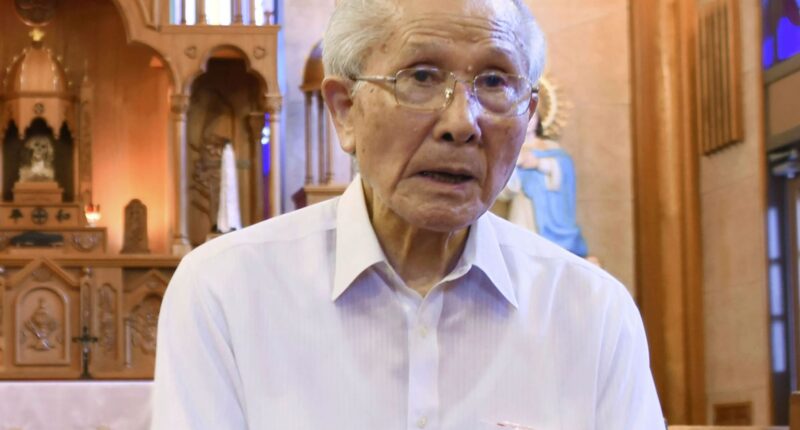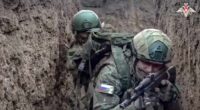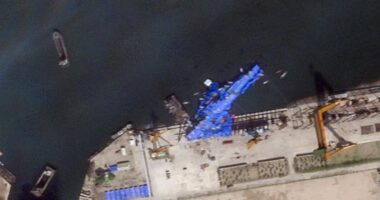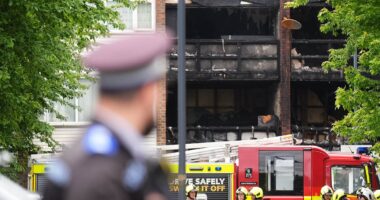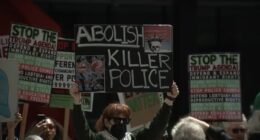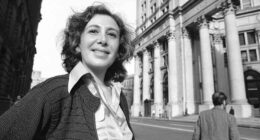A NAGASAKI World War Two bombing survivor – who devoted his life to campaigning against nuclear weapons – has died aged 93.
Shigemi Fukahori horrifically described the “skin melting” impact of the terror 1945 nuke that blitzed his Japanese city.




Fukahori died on January 3 in a Nagasaki hospital in the southwest of Japan.
He became famous after surviving the horror nuclear bomb that tragically killed nearly 50,000 people and shaped the area for decades.
Fukahori was only 14 when the US dropped the atomic weapon on August 9, 1945, that would officially end World War Two.
The Nagasaki nuke was dropped just three days after an initial atomic bomb killed around 100,000 people in Hiroshima.
Japan surrendered days later after the attack but Fukahori spent years detailing the atrocities of this terror blitz.
He died due to old age, according to local media, but Fukahori previously shared the horrific scenes he saw when he was just a teenager.
Fukahori told Japanese broadcaster NHK in 2019: “On the day the bomb dropped, I heard a voice asking for help.
“When I walked over and held out my hand, the person’s skin melted.
“I still remember how that felt.”
The bomb also had a devastating impact on the teenager as his family were wiped out by the nuke.
Fukahori was unable to talk about the horror attack for years, due to his misery and grief.
The peace advocate opened up about his terror experience 15 years ago after a visit to Spain.
He became outspoken after meeting a man who experienced the 1937 bombing of Guernica, also at 14 years old, during the Spanish Civil War.
Fukahori’s work for peace and against war led him to handing Pope Francis a wreath of white flowers during a 2019 visit to Japan.
The survivor represented the World War Two bomb victims at a ceremony in 2020.
He said: “I am determined to send our message to make Nagasaki the final place where an atomic bomb is ever dropped.”
Why were bombs dropped on Hiroshima and Nagasaki?
Back in July 1945, US President Harry Truman made the decision to deploy atomic bombs, which had been created by scientists working on the Manhattan Project, on six cities in Japan. This move came after numerous unsuccessful bombing attempts in Japan.
The American military was desperate to find a swift resolution to the ongoing conflict, as they estimated that a full-scale invasion of Japan would be a prolonged and costly endeavor, potentially resulting in the loss of one million Allied lives.
Allied forces suffered heavy casualties in Europe until Germany surrendered in May 1945.
Japanese soldiers had shown they would fight fiercely to the end and refuse to surrender.
In some battles with US forces, up to 99 per cent of Japanese troops had been killed or committed suicide rather than be captured.
Generals calculated the new atomic weapons would strike a psychological blow and demonstrate America’s superiority.
Hiroshima was chosen as a target due to it being largely untouched in the Pacific War from the nightly bombings.
It was also the station for major military headquarters, said US officials.
According to the Target Committee, Hiroshima was singled out as a strategic target due to its significance as an army supply base and port for military departures, located in the heart of an industrialized urban area. The city was also identified as a prime radar target and its sheer size made it susceptible to extensive damage.
Nagasaki was a major military port and housed one of Japan’s largest shipbuilding and repair centres.
Reports say the city of Kyoto was originally set to be attacked in place of Nagasaki but plans changed.
Fukahori’s fierce work often saw him talking to students about the 1945 horrors.
He often described “the baton of peace,” in reference to his advocacy, which he hoped people would carry on with.
Hiroshima and Nagasaki bombings
US President Harry Truman gave the order for atomic bombs – developed by Manhattan Project scientists – to be dropped on six Japanese cities, in July 1945.
The first target chosen was Hiroshima, an industrial city with a large military HQ in the south west.
A B-29 Superfortress bomber named Enola Gay after the commander’s mother took off from Tinian in the Northern Marinara Islands, early on August 6.
At 8.15am it dropped the Little Boy uranium bomb, 9ft 10in long and weighing 9,700lb, from a height of 31,060ft.
Three days after the Hiroshima blast, the “Fat Man” plutonium bomb was dropped on Nagasaki killing around 50,000.
Six days later Japan surrendered and the war was over.
Thesun.co.uk is your go-to destination for the best celebrity news, real-life stories, jaw-dropping pictures and must-see video.
